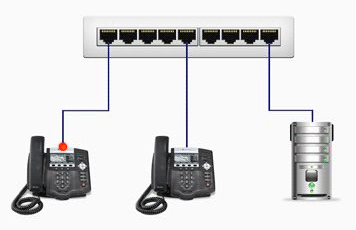GLAD YOU ASKED…
INTRODUCTION
‘Port Mirroring’ is a feature of an Ethernet/network switch that takes a copy of all network traffic seen on one or more ports connected to your VoIP handsets, soft phone computers or mobile devices) and sends it all to a specified port where the CallN Thin Client software can analyse and collect a copy of VoIP calls to securely upload to your CallN account as recordings.
Cisco uses the term ‘SPAN’ (Switched Port ANalyzer) for this feature, while other terms include ‘Port Monitoring’ or ‘Network TAP’.
HOW DOES IT WORK?

As you can see from the above diagrams, only when you have a managed switch capable of port mirroring can a copy of the VoIP traffic be duplicated and sent to the Recording Computer.
DO ALL SWITCHES HAVE THIS FEATURE?
No, not all switches have this feature. Generally this feature is only available on switches that have a management capability, aka ‘Managed Switches’.
However, with the progress by networking equipment vendors in the last few years even cheap home grade units are starting to include a ‘port mirroring’ capability.
For example, one unit we recommend to our small and medium clients is the Netgear GS105E which starts with 5 x ports. Depending on the number of devices you want to record (VoIP handsets, computer softphones, mobile device soft phones connected to a Wi-fi switch) a managed switch with a larger number of ports may be needed.
IS THERE ANY ALTERNATIVE TO A MANAGED SWITCH?
In days gone by you could purchase an Ethernet Hub instead of a Ethernet Switch. These devices are ‘dumb’ and replicate all traffic to every port. Simply put, the Hub doesn’t know where to send traffic like a switch does so it just sends a copy of traffic to every port. This creates a lot of uneeded network traffic compared to a switch with port mirroring that allows you to choose which port to copy and which ports to send the traffic to. Because of the inefficient nature of these Hubs and maximum speed of 10Mbit (1.2MB p/sec), they are no longer produced and would not be ideal for the long term. But if you have an old one laying about the office you could use it to trial with or use within a very small deployment.



